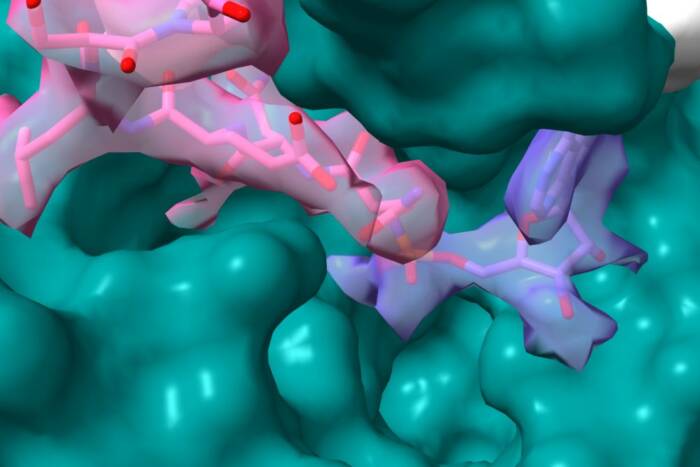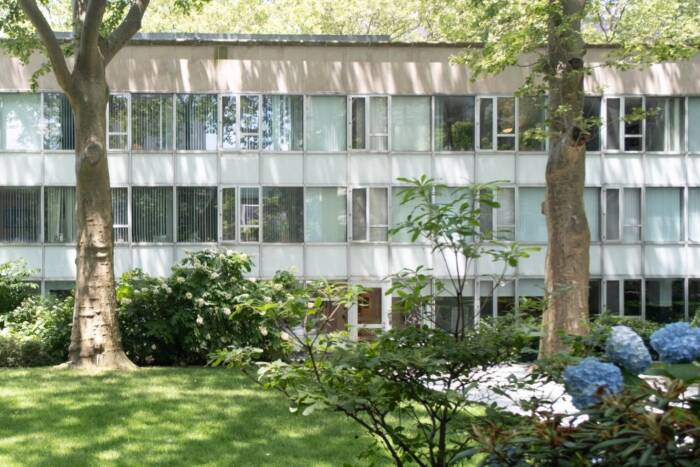’08 budget devotes record $183 million to research
by ZACH VEILLEUX
Rockefeller’s operating budget this fiscal year has increased by 4.7 percent over last year but remains balanced, anticipating a modest surplus of $400,000 by the time the books close in June 2008. “Despite the projected loss of some federal grant revenue this year, the budget remains stable due to an increase in private grant awards and increased endowment spending,” says James Lapple, vice president for finance. “The university has also been able to increase its hard dollar support to the laboratories in excess of $4.5 million over the previous year.”
 (opens in new window)The biggest decrease in this year’s revenues is in the government grants category, which reflects both budget tightening at the National Institutes of Health and the planned departure of faculty members who had NIH grants. Grants from private sources, however, including funding from foundations, increased by 28 percent from the preceding year’s budget, making up much of the difference. “This is largely due to faculty seeking other sources of funding at a time when NIH money has become less reliable,” Mr. Lapple says. “They have been exceedingly competitive in this area.”
(opens in new window)The biggest decrease in this year’s revenues is in the government grants category, which reflects both budget tightening at the National Institutes of Health and the planned departure of faculty members who had NIH grants. Grants from private sources, however, including funding from foundations, increased by 28 percent from the preceding year’s budget, making up much of the difference. “This is largely due to faculty seeking other sources of funding at a time when NIH money has become less reliable,” Mr. Lapple says. “They have been exceedingly competitive in this area.”
While development gifts toward the operating budget have been steady, money from the endowment has risen as a result of a policy change that allows the university to spend a greater share of the endowment’s proceeds. Approved last winter by the university’s board, the increased spend rate allows the university to devote more of the endowment’s growth to current needs while still maintaining “intergenerational equity” that keeps the university well positioned over the long term. The spend rate increased to 5.5 percent of an average market value in fiscal year 2008 and will increase twice more, to 5.75 percent in FY09 and to 6.0 percent in FY10.
Other sources of revenue, which include the university’s auxiliary services (such as food service, housing and The Rockefeller University Press, all of which more or less break even), royalties, leases, parking permits and interest on working capital, are predicted to be consistent. External rent revenue will decrease slightly as some outside labs had to vacate Smith Hall because of construction.
On the expenditures side, the university has grown by 4.7 percent overall, an amount similar to that of previous years.
Spending on research is projected to increase by 4.0 percent, reflecting increased investment in the labs and resource centers. And debt service will rise by 14 percent this year because of $100 million the university will borrow for construction of the Collaborative Research Center. “Debt service levels will continue to rise over the coming years as we borrow additional money for the CRC but will be covered by other revenue sources within the university’s budget,” Mr. Lapple says. About half of the money for the CRC is coming from bonds, the interest on which is exceptionally low at present; the remaining half is covered by private donations raised under the university’s $500 million Campaign for Collaborative Science.
Spending on administrative overhead is stable, up about four percent over last year, the result of economic inflation and modest salary increases. Other categories of spending, including facility operations, auxiliaries and deferred maintenance, are also stable in this year’s projections.
“Overall, our finances are in good shape and we have not seen a return to the difficult position we were in a few years ago when our financial commitments began to overtake our ability to pay for them,” says Paul Nurse, the university’s president. “This is due to our keeping administrative costs down as well as to our faculty’s success in tapping new sources of revenue from government and private grants. Because our budget is stable, we can afford to invest more in our labs and in our infrastructure, and to embark on an important building project without endangering our current enterprise.”


